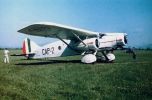
Caproni Ca 133894 viewsThe Ca 133 was modernised version of the Ca 101, cleaned up aerodynamically and given improved engines in an attempt to prolong the type's career as an 16 passenger airliner and second line or "colonial" bomber and transport. Bomber aircraft deployed as military transports, with an interior fitted out to accommodate 18 fully equipped troops, were redesignated Ca i33T and, similarly, conversions for use in an ambulance role were designated Ca 133S. In 1938 a small number of an improved version of the Ca 133 was introduced under the designation Ca 148, serving initially in East Africa, and some survived to fly with the post-war Italian air force.
|
|
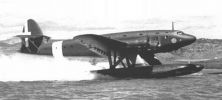
CANT Z 511 Long Range Hydroplane882 viewsThe Cantz 511 Long Range Cargo Hydroplane was first designed by Fillipo Zappata. The first flight took place in Monfalcone (Trieste, north-eastern Italy) in October 1940. It's first operational start took place in February 1942 (Italian territory). On January 1942, the hydroplane had to be employed on different long range routes, as the war against the United States prevented the civil use of CANTZ511 in the Atlantic area. Some had the odd idea of a spectacular mission in the skies of New York, launching one ton of tri-coloured leaflets. Some others thought about a non-stop Rome-Buenos Aires raid (8000 km!). None of these projects was carried out. And it was a real pity, as the test pilot Mario Stoppani - between the end of February and the beginning of March 1942, during the last trials - succeeded in taking off and landing (full loaded) with very rough sea, with 1.5 metres high waves and winds blowing at 55-65 kmh.
|
|
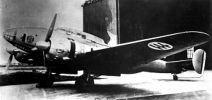
CANT Z 1018 Leone881 viewsIt was clear from the beginning of the flight test program that the performance of the Leone was so high that a production order was certain. This materialized in 1941 in the form of a contract for 300 aircraft to be powered by two Alfa Romeo 135 RC.32 or Piaggio P.XII RC.35 engines, depending on availability. In the event that the Alfa Romeo radial engine was available in larger quantities, and production started in 1943 with a powerplant of two such engines. By the time of the Italian armistace in 9/43 however, deliveries had reached only 10 pre-production and five production warplanes, and a few of these machines saw limited service with the 101st Bombardment Group. Such was the potential of the basic design that two important derivatives were proposed. The first of these was a heavy fighter was a fixed forward armament of 7 20mm cannon as well as a defensive outfit based on three 12.7mm trainable machine guns. The second was a night-fighter with German Lichtenstein SN-2 radar with the antenna in the nose.
|
|
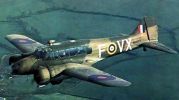
Avro Anson Mk II832 viewsThe Anson first flew in 1935 and went on to serve in a wide variety of roles during the Second World War. Over 11 000 were built and the Anson was still flying for the Royal Air Force in 1968. Anson II's were used primarily to train pilots to fly multi-engined aircraft such as the Lancaster. However wireless operators, navigators, and bomb-aimers used the Anson as well. As a training aircraft the Anson was docile, forgiving, and easy to fly.
|
|
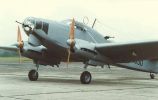
Focke-Wulf Fw 58831 viewsThe Focke-Wulf Fw 58 was an excellent aircraft. It made its first flight in 1935 as a six-seat light transport. The prototype, Fw 58 V1, first flew in 1935 as a six-seater transport. The second prototype was in military guise, having machine guns fitted both in the nose and dorsally. The next production run was of the Fw 58B, some of which were bombers and some others being fitted with floats - the Fw 58BW. The main production model was the Fw 58C, a light transport. Eight were delivered to Lufthansa during 1938/9 as commercial transports.
Large numbers of bothe Fw 58Bs and Fw 58Cs were used by the Luftwaffe being used for light transport, communications and ambulance duties in large numbers even, on occasions, for crop spraying.
|
|
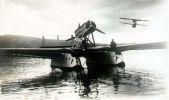
Savoia Marchetti S55 01806 views
|
|
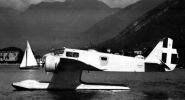
Caproni Ca.316802 viewsship-borne maritime reconnaissance float aircraft, Catapult reconnaissance seaplane version of the Ca.309 series. 14 built.
|
|
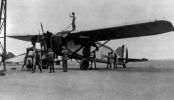
Caproni Ca.101798 viewsThis light bomber for 'colonial' warfare was used in the invasion of Ethiopia. It was a larger development of the Ca.97.
|
|
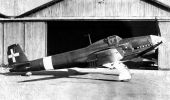
breda Ba.201792 viewsSingle-seat dive bomber. The Ba.201 was a clean low-wing monoplane with an inverted gull wing. It was highly praised by test pilots, except for a disappointing maximum speed. But all available Daimler-Benz DB 601 engines were to be used for fighters, and the Ba.201 was abandoned. Two built.
|
|

Messerschmidt Me 410 Hornisse778 viewsThe Me 410, was an improvement of the Me 210 proposed as a high altitude fighter/bomber with two DB 603A engines (1750 hp), wing edge slats, a presurized cabine, lengthened engine nacelles and no sweep back on the wings. The Me 410 was waited everywhere in all fronts by 1943 and arrived too late. When it finally arrived, it was usually limited to the role of high-speed bomber or reconnaissance. The Hornisse was more successful in Observation units 1 and 7 than in the interceptor role.
The first prototype V1 was ready by the end of 1942. The entire test program envolved some twenty test planes many of which were modified Me 210s. The armament was the same as in the Me 210.
|
|
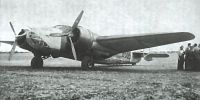
Caproni Ca 135765 viewsThe prototype made its first flight in 4/35 powered by two 800 hp Isotta-Fraschini Asso XI RC Vee engines and driving a wooden two-bladed propeller. The propeller was soon exchanged for a three-bladed metal propeller subsequently accepted for all production versions. The Italian air force felt the Ca.135 had potential and in 1936 ordered 14 examples of the Ca.135 Tipo Spagna (Spanish model), presumably as it was intended to undertake an operational evaluation in the Spanish Civil War. However, none of the aircraft served with the Italian air force in Spain. Trials revealed that the Fiat engines were unreliable and failed to improve performance as significantly as the Piaggio engines, so the few Fiat powered bombers were withdrawn from front-line service and transferred to bomber schools. Thus production of the Ca.135/P.XI was undertaken for a sole export customer, which was the Hungarian air force that received 100 of the type in 1939 and 1940. These aircraft operated with limited success against the Soviets.
|
|
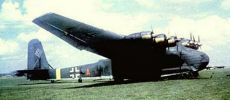
Messerschmitt Me 323758 viewsA powered derivative of the Me 321, the Me 323 proved to be a successful aircraft. Several variants were produced including a Gunship and bomber. This vulnerable transport suffered heavily at the guns of Allied fighters. This version also carried several tonnes of armor and bulletproof glass. Eventually it was decided that escort fighters would be more effective and this version did not see wide-spread production.
|
|
|
|